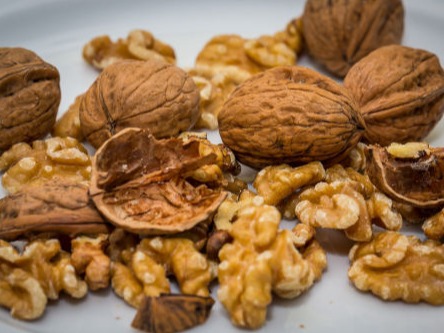
Walnuts
(Juglans nigra, Juglans regia) Walnuts are at the core of a classic get-rich-slow scheme in the upper Midwest. The plan worked like this: plant 10 acres of Black Walnuts, wait 30 years, then cash in by selling the lumber for a zillion dollars. You can see stands of orderly Black Walnut rows all across our region.
I'm not sure this plan ever actually worked, at least not for the planters. Black Walnut wood is indeed very valuable, perhaps worth $1,000+ per mature tree. So if your stand has 1,000 trees, well, our math's not good, but that seems like a lot of potential income. The problem is they never really grow that fast. In real life, you need more like 50 years. Sigh.
A few intrepid folks try to make a a bit of income by gathering up the nuts. This is a very bad idea. Black Walnuts don't want to come out of their shell. And the shells are embedded in tough husks that also are no fun to remove. Most guides suggest you drive over the husks in your SUV to dislodge them from the shells. Any task that starts with crushing an object under your tire is not a task you should consider. Even worse, the outer husk is an inky mess, and one of the most powerful stains in nature. We ruined a lot of pants trying to husk our nuts (sorry, that sentence sounds bad).
Then we learned you can get syrup from Black Walnuts, just like maples. We tried, but the sap flow from our 20-year-old Black Walnut trees just wasn't worth the effort. For people, the older you get the more the "flow" slows to a trickle. But for Black Walnuts, it's the reverse.
English Walnuts are a great cash crop (for the nuts, not the lumber) but they won't grow here in Zone 5. So we tried growing grafted walnuts, that is, an English Walnut grafted on a Black Walnut root. They all died.
Our new approach is a variety called a "Manregion" English Walnut. It's supposed to grow well in Zone. We planted several in the Spring of 2021. Check back in 2030.



